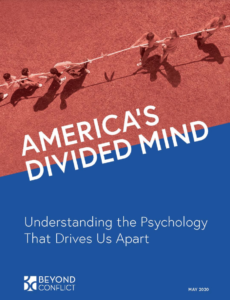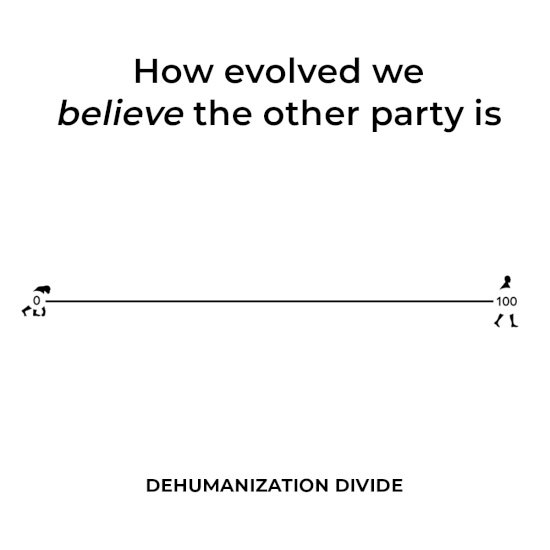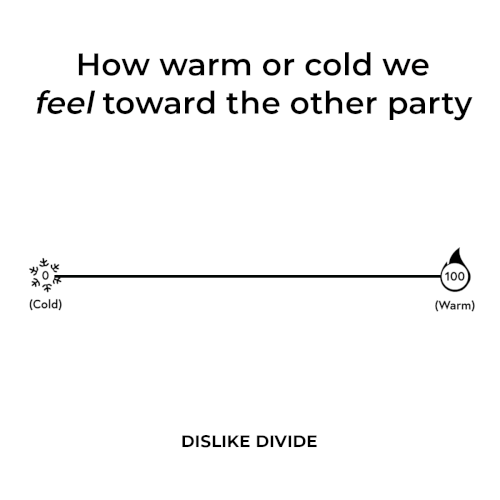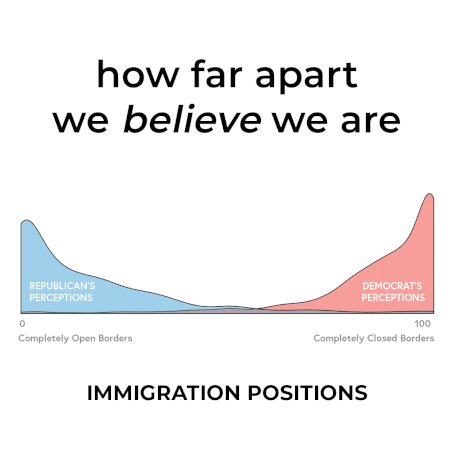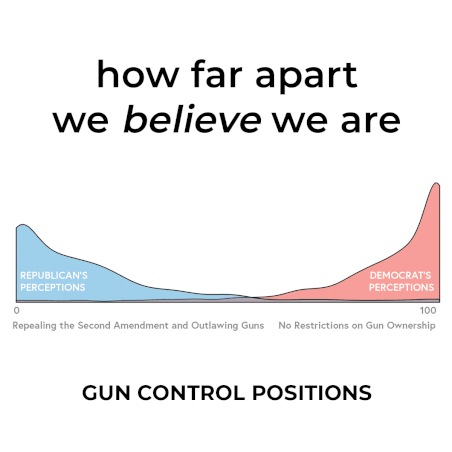Understanding the Psychology That Drives Us Apart
New insights from brain and behavioral science explain how polarization is fueled by Americans’ misperceptions about each other. Learn more about the psychology that drives us apart, and how we can start to reverse it.
Deepening toxic polarization in the United States is a profound threat to the American people and to the very core of American Democracy. After 30 years of working around the globe to bring peace and reconciliation to deeply divided societies, Beyond Conflict launched an unprecedented research project in 2018, the Beyond Conflict Polarization Index™, with leading brain and behavioral scientists to assess the psychological factors that fuel polarization. Our goal is to use psychological insights to develop strategies that enable individuals, institutions, and leaders to address the increasing threat of toxic polarization.
Our research has found a consistent pattern. There is a wide divide between perception and reality across key measures of the Beyond Conflict Polarization Index™. Americans incorrectly believe that members of the other party dehumanize, dislike, and disagree with them about twice as much as they actually do. In short, we believe we’re more polarized than we really are—and that misperception can drive us even further apart. The divide is correlated with outcomes that are consequential for democracy and represent a new degree of toxic polarization in America.
When it’s fully built, the Polarization Index will be used as a diagnostic tool and source of reference for organizations (e.g. journalists, politicians, civic organizations, advocacy groups, religious and other local and national organizations) looking to determine if they are increasing or decreasing polarization.
#1 The Dehumanization Divide: Republicans and Democrats believe that members of the other party dehumanize them more than twice as much as they actually do
Dehumanization is the act of seeing other people as less than human. It is a dangerous psychological process and a strong indicator of potential hostility between groups.
Levels of dehumanization between Republicans and Democrats are concerning. But what’s even more concerning are the levels of perceived dehumanization–the degree to which we feel dehumanized by members of an opposing group. Republicans and Democrats believe that members of the other party dehumanize them more than twice as much as they actually do. Specifically, Republicans estimate that Democrats rate them a score of 28 out of 100 (in reality Democrats rated them at an 83). Similarly, Democrats estimate that Republicans rate them 48 points out of 100 (in reality Republicans rated them at an 80).
#2 The Dislike Divide: Republicans and Democrats overestimate how much the other party dislikes them
The most common feature of polarized psychology is strong feelings of dislike toward members of the other party. Current levels of dislike are strong and widespread: When asked how cold (0) or warm (100) they feel about the other party, Republicans give Democrats a score of approximately 34 out of 100, while Democrats give Republicans a score of 28 out of 100.
Yet as strong as dislike it, Americans believe it is substantially greater than it is. Democrats believe Republicans’ feelings of dislike toward them are 17 points lower than they really are, while Republicans believe that Democrats’ feelings toward them are 13 points lower than they really are. Overestimating how much the other party dislikes your party is predictive of higher levels of social distance (e.g., feeling uncomfortable with members of the other party serving as your doctor, being your child’s teacher, or marrying one of your children).
#3 The Disagreement Divide: Republicans and Democrats overestimate the extent of partisan disagreement on key issues
Americans also exaggerate the extent of partisan disagreement on policy issues. We asked members of each party to rate their own views on immigration. We did not ask about specific policies, but rather about general preference for closed or open borders, noting that many people are not in either extreme. In our survey, 0 means keeping all borders completely open to all migrants and 100 means keeping all borders completely closed to all migrants. We also asked them to estimate how the average member of the other party would answer the same question.
In our samples, Democrats had a median score of 35, but Republicans estimated that Democrats would have a median score of 9. Meanwhile, Republicans had a median score of 75, while Democrats estimated Republicans would have a median score of 92.
We created a similar measurement scale for gun control. In our survey, 0 means repealing the Second Amendment and outlawing guns, and 100 means enforcing no restrictions on gun ownership. We also asked respondents to rate how they think the average Republican or the average Democrat would answer the same question about gun control.
Members of both parties believe the extent of disagreement on gun control is greater than in reality. Republicans estimated that Democrats would place themselves at 11. In reality, Democrats placed themselves at a median score of 35. Meanwhile, Democrats estimated that Republicans would be at a median score of 94, while Republicans placed themselves at a median score of 74.
Future Directions for the Polarization Index
America faces profound challenges that are largely unaddressed, partly due to rising sentiments of mutual animosity between Democrats and Republicans. Our research indicates that the country is not as divided as it seems and that Americans are ideologically closer to one another than they believe. It is clear that untruths about the intentions and beliefs of political parties may be undermining our democracy.
In order to effectively address toxic polarization, we must develop the ability to diagnose, understand, and address the dynamics of a polarized psychology. We need to measure the degree of toxic polarization to combat it. The Beyond Conflict Polarization Index™ systematically tracks polarized psychology and produces actionable insights that citizens, opinion leaders, and civic organizations can translate into programs and action. An evidence-based understanding of the psychology of partisan animosity among the public offers an opportunity to take action in the lead-up to the 2020 elections and beyond.
